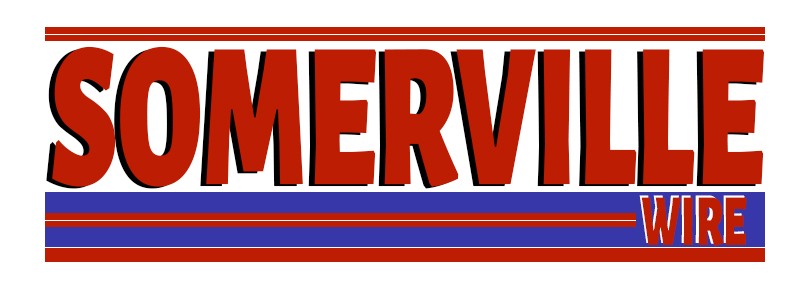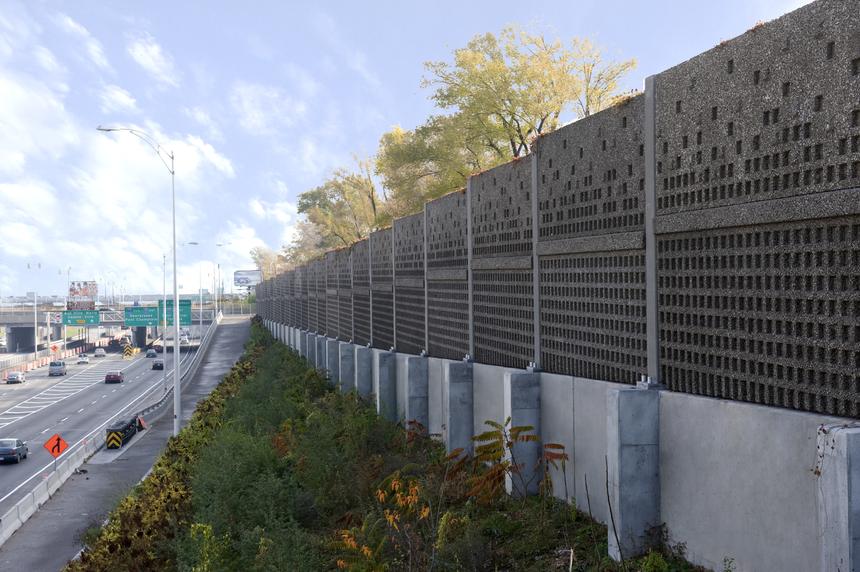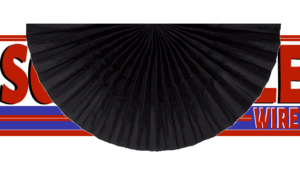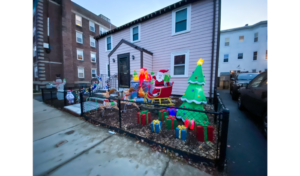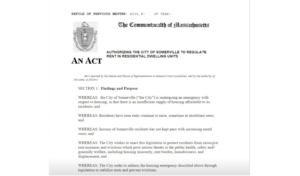The new MassDOT project is seen as both a step forward and a long overdue move
The Somerville Wire recently received a Kozik Environmental Justice Reporting Grant, through the National Press Foundation and the National Press Club Journalism Institute. This article is the second to last in a series about how roadways like I-93 and others in East Somerville have posed health risks to residents, many of whom are immigrants and working-class individuals. Not only do highways present barriers, dividing East Somerville from other neighborhoods, but residents face the prevalent threat of air and noise pollution. Advocates have said that this is not an accident. Here is a look at the push to have new sound barriers brought to the I-93 highway.
(Somerville Wire) – The Massachusetts Department of Transportation is moving ahead with a noise study that could result in the construction of sound walls along Interstate 93. For residents of East Somerville, who have long suffered the effects of air and sound pollution from the highways over the years, this study represents progress, according to State Representative Mike Connolly. Other activists remain skeptical of MassDOT’s initiatives, pointing to examples of when the department has been opaque or has not engaged with the community. Connolly called the development of the study “encouraging,” suggesting that MassDOT’s agreement to do this work marks a turning point and indicates that attempts at advocacy have been successful.
“First and foremost, we need to keep a lot of perspective here,” said Connolly. “On the sound wall front, the big story here is that up until June 30, we had complete resistance. We were told there was really no conversation to be had, that there was really no way to contemplate even doing sound walls. To the extent that back on June 30, MassDOT made a commitment to turn the corner and to actively work with us to seek solutions, I’m very satisfied, based on this update. It’s clear that that is something they are participating in and following up on. Of course, more communication and faster communication is always better.” He added, “I think our collective advocacy was really powerful. We were able, collectively, to really articulate and demonstrate the specific human toll that these dangerous roadway conditions have tragically had on some of our constituents.”
Connolly recently requested an update from MassDOT on the progress of the sound wall study, which was shared with the Somerville legislative delegation. According to this update, the study will assess potential noise abatement measures, including identifying locations, height, and length and evaluating alternative abatement measures. The study will also determine acoustical benefits and assess the feasibility and constructability of potential abatement measures. The scope also covers a summary of potential effects of sound walls on air pollution, due to roadway emissions. The update offered a timeline for the study, indicating that so far, MassDOT has completed an analysis of abatement measures, identified potential locations and parameters, and determined noise reductions. They still need to construct a site visit to assess constructability. An anticipated completion date for the final report is planned for early 2022.
It has taken time for legislators like Connolly and the East Somerville community to have MassDOT listen to the neighborhood’s needs. MassDOT previously proposed an I-93 viaduct project that Connolly was alarmed to have only heard about in April 2021. He had expressed that he feared this project would prioritize the “safety of the steel” over the public health of East Somerville residents. At a June 8 public meeting, community members had many questions for MassDOT left unanswered because the discussion had to be “ended early due to technical issues,” according to MassDOT. In response to intense public pressure, MassDOT held another meeting on June 30, where they outlined new improvements they would be making, which would address environmental concerns and respond to safety issues. Connolly said that he felt optimistic about this step from MassDOT.
“[We really made] that case that we deserved better,” said Connolly. “A key thing for me was when that I-93 viaduct rehabilitation project was rolled out, it had been presented to us as if the previous conversations around road safety and our previous desires around mitigating the impact of the interstate pollution were not related. What we were able to do as legislators, with the support of our community, is a) really insist and show them that they had commitments they had to follow through on, on the road safety stuff, and b) all of the bureaucratic regulations and policy notwithstanding, the inequity of having beautiful new sound walls protecting miles of trees out in suburban communities. When you hold that picture up, in meetings with the transportation secretary … I showed them the pictures side by side, and you can look at this wealthy, whiter, more suburban neighborhood that has these beautiful sound walls, and all you see on the map is a random scattering of single-family homes and hundreds of beautiful trees. I show you the most densely populated community in all of Massachusetts … and I can show you lane after lane of automobile traffic. … We hold that picture up, and there’s no denying that that is inequity.”
East Somerville has had a history of being denied the much-needed sound walls, according to Ellin Reisner, president of the Somerville Transportation Equity Partnership. This problem goes back to the 1970s, when the construction of I-93 was completed. MassHighway, the agency that had originally promised the barriers, has since become part of MassDOT.
“What happened is, in the context of the politics of Somerville during that period, which was not necessarily very good, there were many people in the States Avenue neighborhood who wanted sound barriers,” said Reisner. “There were also a few people who were opposed to it. I think that what happened was that they played off of those people and never built them. They played off of the disagreement and never built the sound barriers. That was a tactic that’s been used for years. … While there was a commitment to do it, there was also resistance to it, and they were able to use that to not do it.”
Reisner added, “There was always resistance to building the interstate in this neighborhood. They relocated a lot of people who were living where the highway is now. There was a lot of opposition to that. Then, when they couldn’t stop it, the neighborhood said, at least build this below-grade, in a reservation, so that we’ll be less affected by it. They didn’t do that either. They built an elevated highway, and then they said they’d put sound barriers up [which did not happen]. … The political climate in Somerville was really bad in those days. There was a lot of corruption, people would buy off politicians, and a lot of people in the neighborhood had no power. … They got away with it, because they were able to do that. There was not the political will in the city to fight, as there would be now.”
Air pollution expert Wig Zamore said that if anything is to come out MassDOT’s study, he would like to see sound walls built and agreed with Connolly that MassDOT should have more meetings with advocates, stakeholders, and community members. Sound barriers could have the potential to mitigate the effects of air pollution, in addition to noise pollution, he said.
“I think what we would like to see come out of this is sound walls, at least in the States Avenue area, and we would like those to be designed in conjunction with the immediate neighbors and the environmental health coalitions that have been working for 15 years in this corridor, like STEP and Tufts University,” said Zamore. “We would love for that to happen. In the Mystic Housing corridor … we have tended to focus more on trying to tighten up the buildings and look at air filtration than on sound walls, because we would not want sound walls to just be imposed up against their sidewalks, blocking off sunlight … We would want to further study what to do there.”
Community activists have spoken to how MassDOT remains a relatively opaque agency—they would like to see more outreach with the public. Reisner said that she believes that there are well intentioned people there but that the way that they make decisions is not responsive to the community. For Stephanie Galaitsi, a steering committee member of the Somerville Alliance for Safe Streets, she said that MassDOT has been “hard to reach,” adding, “They’re in the business of building highways.” Meanwhile, MassDOT representatives refused repeated requests to be interviewed for this article. Galaitsi said that if the department goes ahead and builds sound walls and makes the appropriate safety measures, as an activist, she will feel satisfied, but that she would like to see MassDOT care more about people and not just “moving cars.”
“I heard this really amazing quote that said, ‘One motorcycle in Paris can wake 10,000 people,’ which I think is a really good expression of the density of an area and how people driving through it can be so disruptive, and we give them so much power to be,” said Galaitsi. “I think we just need to make sure that we’re not completely negating the humanity of the people along these corridors.”
This article is syndicated by the Somerville Wire municipal news service of the Somerville News Garden project of the Boston Institute for Nonprofit Journalism.
All Somerville Wire articles may be republished by community news outlets free of charge with permission and by larger commercial news outlets for a fee. Republication requests and all other inquiries should be directed to somervillewire@binjonline.org. Somerville Wire articles are also syndicated by BINJ’s MassWire state news service at masswire.news.
SUBSCRIBE TO THE FREE SOMERVILLE WIRE EMAIL NEWSLETTER: https://eepurl.com/hpBYPv
Check out all our social media here: https://linktr.ee/SomervilleWire.
Shira Laucharoen is assistant director of the Boston Institute for Nonprofit Journalism and assistant editor and staff reporter of the Somerville Wire.
